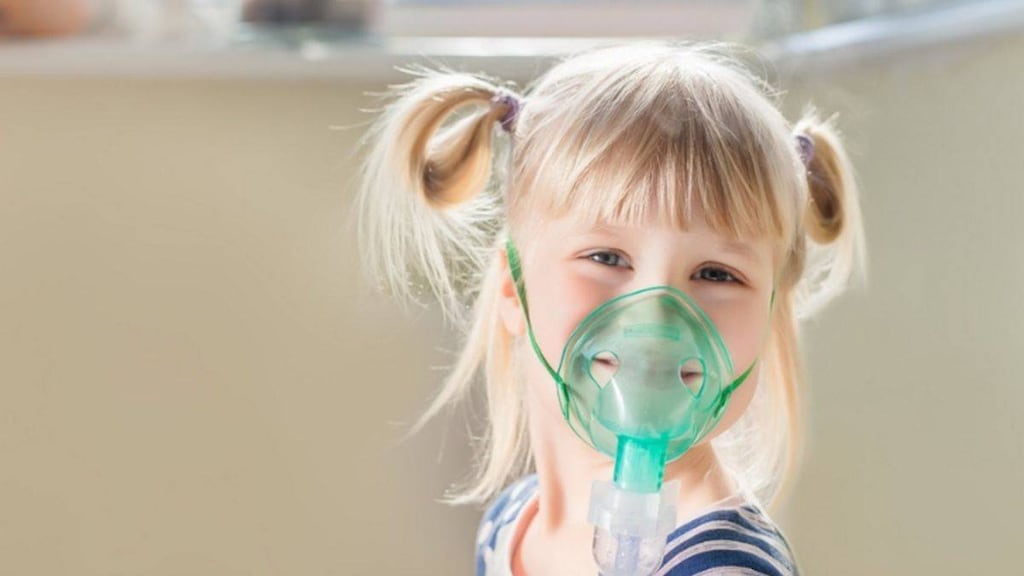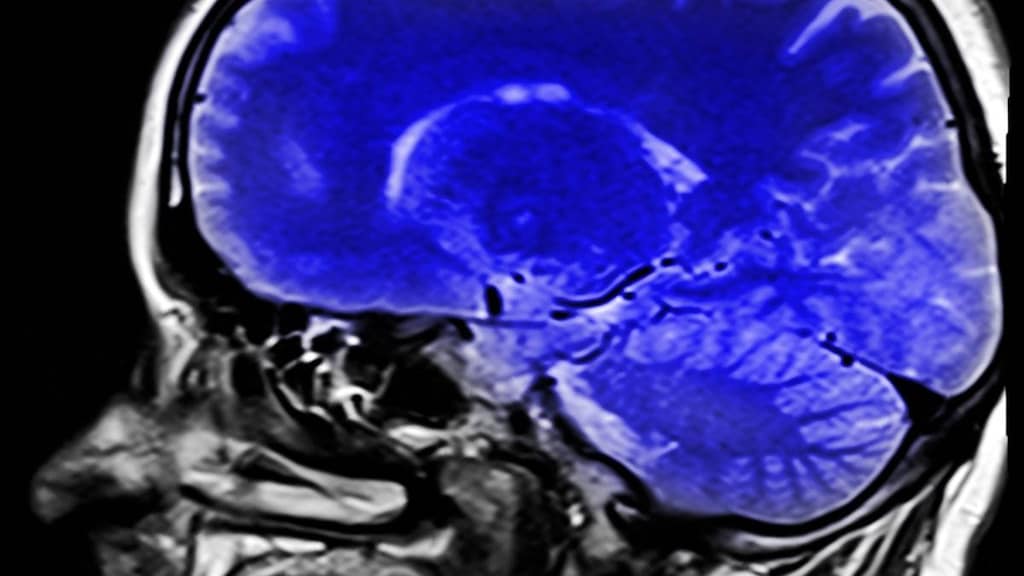Boxed Warning
Risk of severe bronchospasm (powder for inhalation):
Mannitol acts as a bronchoconstrictor and may cause severe bronchospasm. Bronchial challenge testing with mannitol is for diagnostic purposes only. Bronchial challenge testing with mannitol should only be conducted by trained professionals under the supervision of a health care provider familiar with all aspects of the bronchial challenge test and the management of acute bronchospasm. Medications (eg, short-acting inhaled beta-agonists) and equipment to treat severe bronchospasm must be present in the testing area. If severe bronchospasm occurs, it should be treated immediately by administration of a short-acting inhaled beta-agonist. Because of the potential for severe bronchoconstriction, the bronchial challenge testing with mannitol should not be performed in any patient with clinically apparent asthma or very low baseline pulmonary function tests (eg, forced expiratory volume at 1 second [FEV1] less than 1 to 1.5 L or less than 70% of the predicted values).
Dosage Forms
Excipient information presented when available (limited, particularly for generics); consult specific product labeling.
Kit, Inhalation:
Aridol: Graduated dose; 0 mg (1), 5 mg (1), 10 mg (1), 20 mg (1), 40 mg (15)
Pharmacology
Mechanism of Action
The mechanisms of bronchoconstriction are unknown.
Pharmacokinetics/Pharmacodynamics
Distribution
34.3 L (based on IV administration)
Metabolism
Minimally hepatic to glycogen
Excretion
Urine (~55% to 87% as unchanged drug)
Time to Peak
Plasma: Inhaled: 1.5 hours
Half-Life Elimination
Terminal: 4.7 hours
Use: Labeled Indications
Assessment of bronchial hyper-responsiveness: For the assessment of bronchial hyper-responsiveness in patients 6 years and older who do not have clinically apparent asthma.
Contraindications
Hypersensitivity to mannitol, gelatin, or any component of the formulation; conditions that may be compromised by induced bronchospasm or repeated spirometry (eg, aortic or cerebral aneurysm, uncontrolled hypertension, recent MI or cerebral vascular accident)
Dosage and Administration
Dosing: Adult
Assessment of bronchial hyper-responsiveness: Inhalation: Administer in a stepwise fashion (measuring FEV1 in duplicate after each administration) until the patient has a positive response or 635 mg of mannitol has been administered (whichever comes first).
Positive test: 15% reduction in FEV1 from baseline or 10% incremental reduction in FEV1 between consecutive doses
Negative test: Administration of full dose (635 mg) without reduction in FEV1 sufficient to meet criteria for a positive test
Administration should be as follows:
|
Dose # |
Dose (mg) |
Cumulative Dose (mg) |
Capsules/Dose |
|---|---|---|---|
|
1 |
0 |
0 |
1 |
|
2 |
5 |
5 |
1 |
|
3 |
10 |
15 |
1 |
|
4 |
20 |
35 |
1 |
|
5 |
40 |
75 |
1 |
|
6 |
80 |
155 |
2 x 40 mg caps |
|
7 |
160 |
315 |
4 x 40 mg caps |
|
8 |
160 |
475 |
4 x 40 mg caps |
|
9 |
160 |
635 |
4 x 40 mg caps |
Table has been converted to the following text.
Stepwise Administration Schedule:
Dose 1: 0 mg (1 capsule/dose); Cumulative dose: 0 mg
Dose 2: 5 mg (1 capsule/dose); Cumulative dose: 5 mg
Dose 3: 10 mg (1 capsule/dose); Cumulative dose: 15 mg
Dose 4: 20 mg (1 capsule/dose); Cumulative dose: 35 mg
Dose 5: 40 mg (1 capsule/dose); Cumulative dose: 75 mg
Dose 6: 80 mg (2 x 40 mg caps); Cumulative dose: 155 mg
Dose 7: 160 mg (4 x 40 mg caps); Cumulative dose: 315 mg
Dose 8: 160 mg (4 x 40 mg caps); Cumulative dose: 475 mg
Dose 9: 160 mg (4 x 40 mg caps); Cumulative dose: 635 mg
Dosing: Geriatric
Refer to adult dosing.
Dosing: Pediatric
Bronchial hyper-responsiveness assessment: Children ≥6 years and Adolescents: Oral inhalation: Administer in a stepwise fashion (measuring FEV1 in duplicate at baseline and after each administration) until the patient has a positive response or 635 mg of mannitol has been administered (whichever comes first).
Positive test: 15% reduction in FEV1 from baseline or 10% incremental reduction in FEV1 between consecutive doses
Negative test: Administration of full dose (635 mg) without reduction in FEV1 sufficient to meet criteria for a positive test
Administration should be as follows:
|
Dose # |
Dose (mg) |
Cumulative Dose (mg) |
Capsules/Dose |
|---|---|---|---|
|
1 |
0 |
0 |
1 |
|
2 |
5 |
5 |
1 |
|
3 |
10 |
15 |
1 |
|
4 |
20 |
35 |
1 |
|
5 |
40 |
75 |
1 |
|
6 |
80 |
155 |
2 x 40 mg caps |
|
7 |
160 |
315 |
4 x 40 mg caps |
|
8 |
160 |
475 |
4 x 40 mg caps |
|
9 |
160 |
635 |
4 x 40 mg caps |
Table has been converted to the following text.
Stepwise Administration Schedule:
Dose 1: 0 mg (1 capsule/dose); Cumulative dose: 0 mg
Dose 2: 5 mg (1 capsule/dose); Cumulative dose: 5 mg
Dose 3: 10 mg (1 capsule/dose); Cumulative dose: 15 mg
Dose 4: 20 mg (1 capsule/dose); Cumulative dose: 35 mg
Dose 5: 40 mg (1 capsule/dose); Cumulative dose: 75 mg
Dose 6: 80 mg (2 x 40 mg caps); Cumulative dose: 155 mg
Dose 7: 160 mg (4 x 40 mg caps); Cumulative dose: 315 mg
Dose 8: 160 mg (4 x 40 mg caps); Cumulative dose: 475 mg
Dose 9: 160 mg (4 x 40 mg caps); Cumulative dose: 635 mg
Administration
Inhalation: Administer using supplied single patient use inhaler; do not puncture capsule more than once; do not swallow capsules. A nose clip may be used if preferred. The patient should exhale completely, followed by a controlled rapid deep inspiration from the device; hold breath for 5 seconds and exhale through the mouth. Measure FEV1 in duplicate 60 seconds after inhalation; repeat process until positive response or full dose (635 mg) has been administered.
Storage
Powder for inhalation: Store at <25°C (<77°F); excursions permitted between 15°C to 30°C (59°F to 86°F). Do not freeze.
Drug Interactions
There are no known significant interactions.
Adverse Reactions
1% to 10%:
Cardiovascular: Chest discomfort (1%)
Central nervous system: Headache (adults 6%; children 3%), dizziness (1%)
Gastrointestinal: Nausea (adults 2%; children 3%), throat irritation (2%), retching (1%)
Respiratory: Cough (2%), pharyngolaryngeal pain (adults 2%; children 4%), rhinorrhea (2%), dyspnea (1%), wheezing (1%)
<1%, postmarketing, and/or case reports: FEV1 decreased, gagging
Warnings/Precautions
Concerns related to adverse effects:
- Bronchospasm: [US Boxed Warning] Use may result in severe bronchospasm; use only for bronchial challenge testing. Testing should only be done by trained professionals. Not for use in patients with asthma or very low baseline pulmonary function. Medications (eg, short-acting inhaled beta-agonist) and equipment for the treatment of severe bronchospasm should be readily available. Use with caution in patients with conditions that may increase sensitivity to bronchoconstriction (eg, severe cough, ventilatory impairment, spirometry-induced bronchoconstriction, hemoptysis of unknown origin, pneumothorax, recent abdominal, thoracic, or intraocular surgery, unstable angina, active upper or lower respiratory tract infection). Patients who have ≥10% reduction in FEV1 on administration of the 0 mg capsule, patients with a positive response to bronchial challenge testing, or patients who develop significant respiratory symptoms should receive short acting inhaled beta-agonist; monitor until full recovery to baseline. Bronchial challenge testing should not be performed in children <6 years of age as these patients are unable to provide reliable spirometric results.
Monitoring Parameters
Standard spirometry prior to bronchial challenge test; FEV1 in duplicate 60 seconds after administration of each step of test
Pregnancy
Pregnancy Risk Factor
C
Pregnancy Considerations
Adverse events were not observed in animal reproduction studies.
Patient Education
What is this drug used for?
- It is used during an asthma test.
Frequently reported side effects of this drug
- Headache
- Sore throat
- Nausea
- Vomiting
- Abdominal pain
- Dizziness
- Runny nose
- Sneezing
- Sweating a lot
Other side effects of this drug: Talk with your doctor right away if you have any of these signs of:
- Cough
- Whistling sound while breathing
- Shortness of breath
- Signs of a significant reaction like wheezing; chest tightness; fever; itching; bad cough; blue skin color; seizures; or swelling of face, lips, tongue, or throat.
Note: This is not a comprehensive list of all side effects. Talk to your doctor if you have questions.
Consumer Information Use and Disclaimer: This information should not be used to decide whether or not to take this medicine or any other medicine. Only the healthcare provider has the knowledge and training to decide which medicines are right for a specific patient. This information does not endorse any medicine as safe, effective, or approved for treating any patient or health condition. This is only a brief summary of general information about this medicine. It does NOT include all information about the possible uses, directions, warnings, precautions, interactions, adverse effects, or risks that may apply to this medicine. This information is not specific medical advice and does not replace information you receive from the healthcare provider. You must talk with the healthcare provider for complete information about the risks and benefits of using this medicine.


